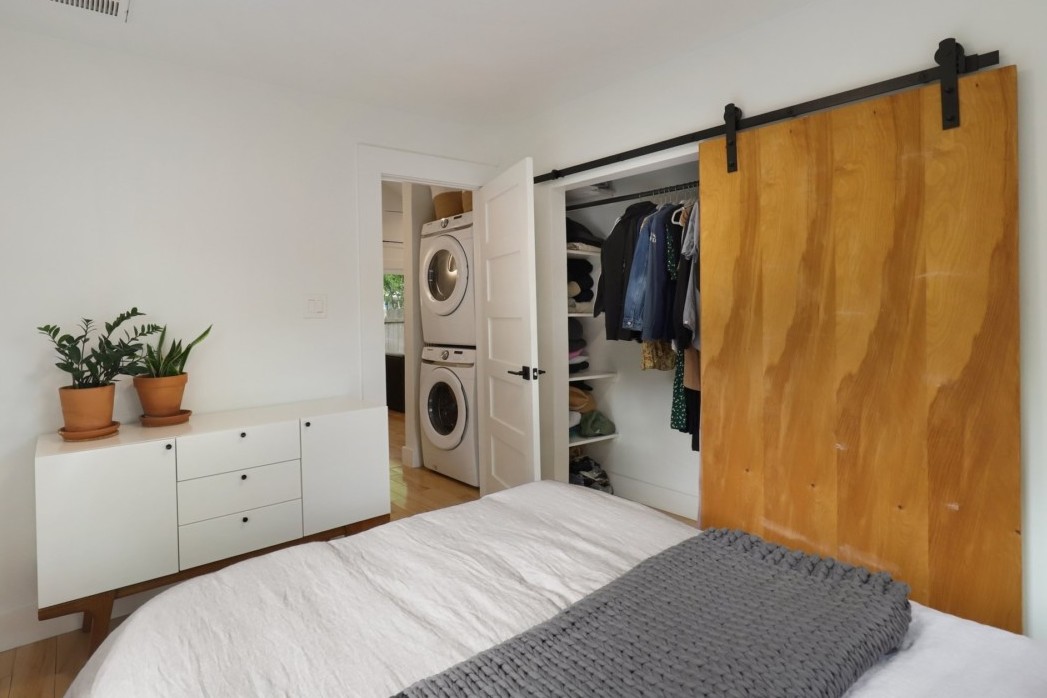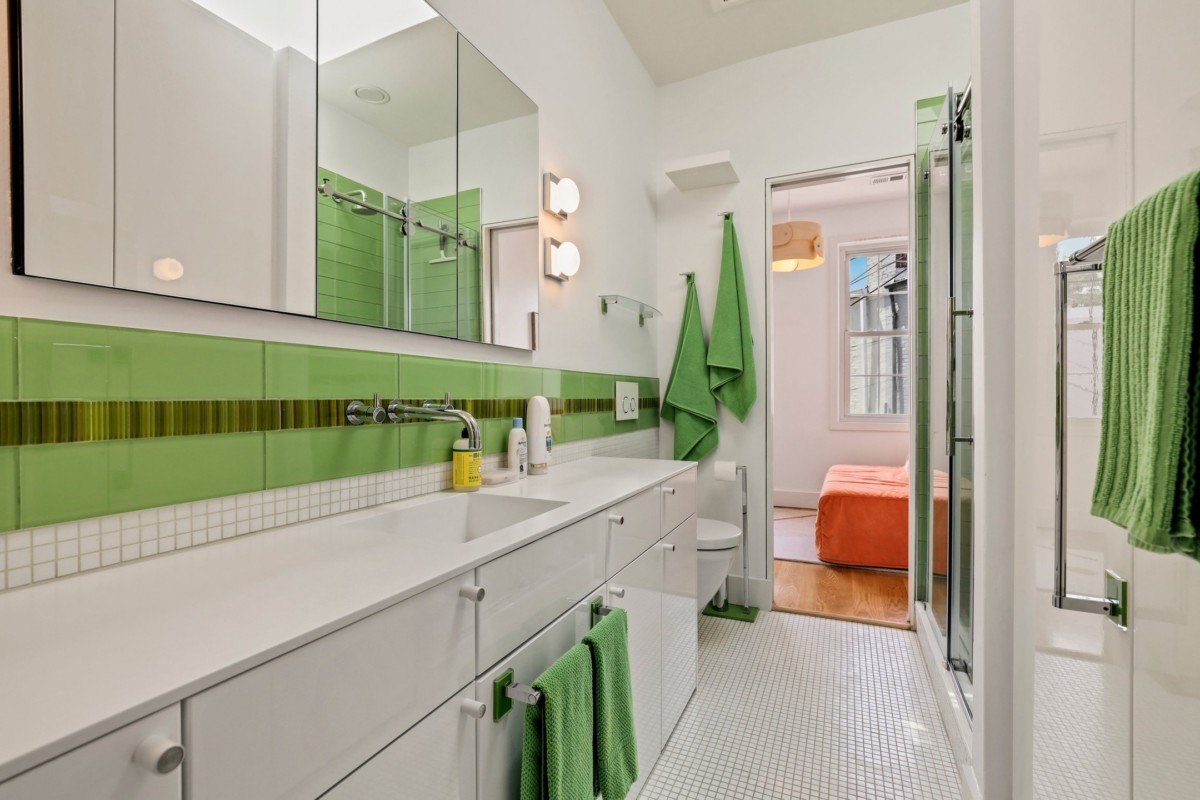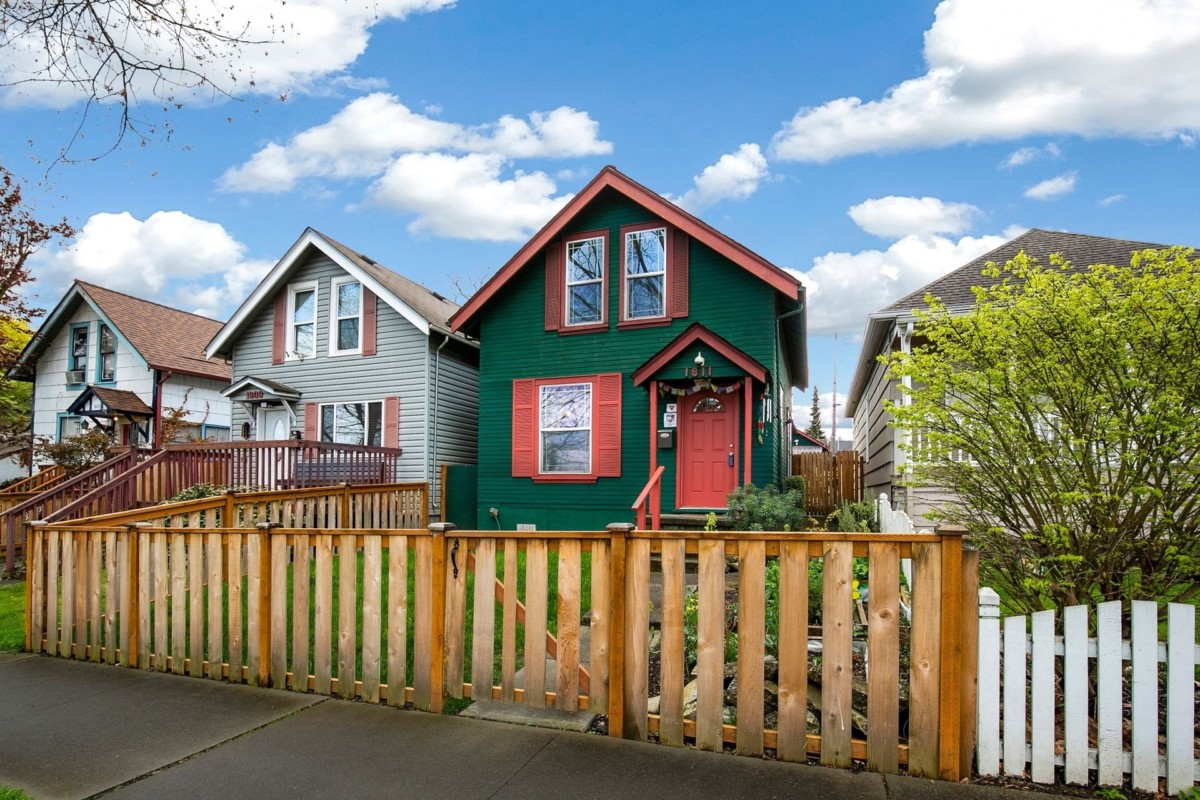It’s no secret that real estate is getting more expensive on all fronts. Collecting rent on a spare room is one time-tested strategy to offset housing costs. It even has a name: “house hacking.”
But renting a room isn’t everyone’s cup of tea. Taking the time to prepare for any surprises could help you get the most out of your rental. Here are 13 steps to room-rental success:

1. Check the laws and restrictions first
Review any local laws regarding residential leasing, including your local zoning laws. You may need a special zoning permit to rent a room in your home. You’ll also want to touch up on the landlord-tenant responsibilities and laws in your state.
If you live in a condo, townhouse, or another home within a homeowner’s association (HOA), review your HOA agreement for guidelines on rentals. Most HOAs have rules and restrictions for renting, in addition to pets, parking, and home maintenance standards. Understanding these guidelines can help you avoid hefty fines or other penalties in the future.
Take some time to understand the Fair Housing Act if you aren’t already familiar with it. This legislation prohibits housing discrimination based on identity factors like age, sex, race, religion, familial status, national origin, and disability. Some states also include additional Fair Housing laws.
It never hurts to speak with a lawyer when you can. This way, you can rest assured all legal details are in line. Legal fees are often tax-deductible, but an accountant can help determine your tax specifics.
Rental terms to consider
Depending on where you live, you may have several options regarding the length of your lease. The general term lengths for rental units are:
- Short-term rentals rent for one night to one month
- Medium-term rentals rent for one month to one year
- Long-term rentals rent for at least one year, then renew annually
While long-term leases can offer a more reliable income, medium- and short-term rentals can be lucrative when your local market supports them. Medium-term rentals might be a good fit for people visiting for more than two weeks but less than a year. For example, a traveling nurse might need an apartment for three months.
On the other hand, a short-term rental usually suits people looking for a local alternative to a hotel. It can be a solid option for rental homes in Tampa, FL, or condos in Orlando, FL, where tourism plays a big role in local rental markets.
Either scenario offers more flexibility, but you’ll probably need to furnish the area yourself. Always check local laws and HOA guidelines before you make plans for a short- or medium-term rental.
2. Know what to expect
Renting out a room can be a great way to diversify your income, but it can also come with significant drawbacks. Less privacy is one of these shortcomings.
You’ll need to decide which parts of the house are your personal areas, your tenant’s personal areas, and shared common spaces. You’ll be giving up some control over your space and need to abide by specific rules, even in your own home. For example, you won’t be able to enter your tenant’s private living space without notice. Shared spaces are fair game.
Consider ways you can protect your privacy and offer the same to your tenant. Providing your tenant with a private entrance, bathroom, and kitchen is a bonus, but it isn’t always realistic. One alternative is to install a lock on your tenant’s door, so they can secure their belongings. Even little things like setting aside kitchen cabinet space or adding an extra towel rack in a shared bathroom can also make them feel more comfortable.

3. Call your homeowner’s insurance company
How you use your home can affect your home insurance policy. Make sure to discuss any rental plans with your insurance agent or another representative.
Some policies may prohibit you from having a renter, which means you could be liable for any losses incurred by your renter. Rewriting your policy to include landlord protection can be well worth the cost.
But what if you don’t own the home and are a tenant yourself? For example, let’s say you’re renting a two-bedroom house and want to rent your second bedroom to someone else. You might be able to pull it off, but it depends on the lease agreement you signed with your landlord.
If you’re a renter considering a tenant of your own, carefully read your lease and discuss any plans with your landlord. There’s a good chance it’s already prohibited in the rental agreement.
4. Figure out the floor plan
You want to decide which space you’ll be renting, which space will serve as common areas, and which spaces will be reserved just for you. The more privacy you can offer prospective tenants, the better. Tenants will usually pay much more to rent a primary bedroom with an attached bathroom than a smaller room with a shared bathroom.
As you consider your options, you might think of floor plan adjustments that boost your rental value without sacrificing privacy. Some landlords choose to turn their living room into a primary bedroom and then rent it to a tenant.
Generally speaking, the more comfortable a renter is, the higher the rental price you can earn.
5. Get the room (and house) ready
Cover all the household basics when you set up your home for rental. Deep clean your home and remove anything you don’t want in shared spaces. Address maintenance issues like leaky faucets or a loose shower handle beforehand. You may also need to paint and furnish the room based on your lease term and tenant expectations.
Depending on your market, start-up funds, and the home itself, you may have the opportunity to add features that make your home more suitable for room rentals. If you don’t have the budget for full-scale home renovation, consider optimizing storage space or adding an amenity. For example, an in-unit washer and dryer can cost much less than a renovation but still benefit your tenant.
6. Keep any valuables safe
You’re about to share your home with someone you may not know very well. That doesn’t mean you need to worry, but sometimes, it’s better to be safe than sorry.
A safe for small valuables and a locking filing cabinet for sensitive documents might give you extra peace of mind.

7. Set the rent
To understand how much rent you can charge, you’ll need to research the rental market in your area. Look at nearby listings for room rentals and take note of:
- Room size, closet space, and storage space
- Access to a private bathroom
- Home features and amenities
- Room furnishings
- If utility costs are included in the rent
- Parking availability and ease of access (watch for things like tandem parking)
Note the rent for any rooms that closely resemble your rental. This should give you a good idea of what you can charge.
Now, look at room rentals on the higher end of the price scale. Are there changes you could make to your home that would allow you to set a higher rent? You may be able to find creative ways to upgrade your offering and get the most out of the agreement.
Don’t be afraid to ask other landlords or property managers for input. You might be surprised by how willing people are to share their experiences.
Once you’re comfortable with a rate, decide how and when your future tenant will pay rent. Will rent be due on the first of every month? Can the tenant pay rent with a personal check, money order, online bill-pay service, or all of the above?
Of course, don’t forget to consider prorated rent if your tenant moves in during the middle of a pay period.
8. Decide how you’ll seal the deal
You can rely on a verbal agreement between you and your renter, but that may result in misunderstandings, which can then lead to legal problems. Instead, you should consider a formal rental agreement that details the rules and terms of the rented room.
The rental agreement should line up with your state and local laws. You might be able to find a rental agreement template that fits your needs, but it’s never a bad idea to talk to an attorney before entering into a legal contract.
A formal room rental agreement offers plenty of benefits:
- You can clearly state the rent amount
- You can clarify which additional costs the tenant is responsible for, like pet rent
- You can define the terms of their security deposit
- You protect yourself from certain legal liabilities
9. Post your ad
People looking for a new home need to know that you have space for rent, so you’ll need a basic write-up of any room specifics you can share with potential renters. In addition to any other helpful information, include the following in your listing:
- Square footage of the room and home
- Home features and amenities (highlight any home features trending in your area)
- General location
- Nearby amenities or attractions
- Broad rental terms that could exclude any applicants (renters with pets, for example)
- High-quality photos
Photography is always important. If you have great natural lighting or other desirable home features, this is your chance to show them off. And remember, homes always look best when they’re clean and organized.
Once you’re finished, you can post your rental information on local sites like Craigslist and Nextdoor, social media outlets like Facebook, or through a number of other free or paid services. You can also share rental information with your personal or work networks to see if they might recommend anyone.

10. Interview and screen applicants
It can help to interview your applicants using a prepared list of questions. This gives you a feel for what it would be like to live with them.
Consider what’s important to you in a housemate. You can often ask about income, pets, why they’re moving, and any other factors important to you. Give the applicant a copy of the rules of your house and ask them if they’re a good fit. Things like quiet hours and smoking policies are generally fair play to discuss during interviews.
Completing a background check and credit check are usually the next steps. This gives you a rough picture of each applicant’s civil and financial responsibility. Depending on your market, your applicant may cover any costs involved with these checks.
As always, make sure to follow all state and federal Fair Housing laws whenever you consider applicants.
11. Select your housemate and sign a lease
Now, you’ll need to pick an applicant and have them sign your rental agreement. Everything on the lease may be negotiable, as long as it’s within the law. Your renter may request to add, remove, or change certain parts of the lease, but you can choose whether you want to accept their requests or not.
During the lease signing process, you’ll also collect the security deposit, first month’s rent, and last month’s rent, depending on state laws and your preferences.
Once everything is organized and finalized, your renter can move in. Provide your tenant with a key to their room, the home, and the mailbox, if needed.
12. Keep track of your income
Any money you make from room or home rentals is considered taxable income, so you’ll want to discuss your tax liability with an accountant if needed. They may advise you to set up quarterly payments with the IRS, in addition to other tax guidance.
The good news is that you may be able to deduct certain rental-related costs from your taxes. This can help some landlords lower their overall tax burden by increasing their overall deduction amount. Make sure to keep receipts and records of all rental expenses.
Here’s a list of possible tax deductions to discuss with your accountant:
- Property taxes
- Property management fees
- Lawn care services
- Security system costs
- Utilities (water, electric, heat)
- Building depreciation
- Repairs and maintenance
- Advertising
- Legal fees
- Other operating expenses
Some accountants specialize in rental income and expenses. They may be able to offer other specific ways to make the most out of your investment.
13. Be a great housemate
When you show your tenant respect, your tenant is more likely to return the favor toward you and your property. When you take your time to find a great roommate, you have a better chance of hitting a groove and living effortlessly with that person.
You may find it helpful to design some house rules and get genuine buy-in from your renter. Asking for feedback and being open to suggestions is a great way to make them feel valued and improve their renting experience.

The pros and cons of renting a room in a house
There are many advantages and disadvantages to becoming a landlord. As you read the list below, consider how each point relates to your needs and preferences.
Pros
The main benefit of renting a room is the additional income it provides. Many use rental income to pay mortgage loans or other debts more quickly.
But there’s more to room rental than paying off debt. Renting out a room can:
- Turn flexible space into an income opportunity
- Make home improvement expenses tax-deductible
- Allow you to test the waters before expanding your rental portfolio
- In some cases, provide you with a pet sitter, plant sitter, or house sitter while you’re gone
- Give you someone to share your day-to-day with
- Give you peace of mind during uncertain economic times
Cons
Renting out part of your house can be personally and financially rewarding. But don’t forget to consider any potential downsides. Renting a room may:
- Add more wear and tear to your flooring, appliances, and plumbing
- Add daily compromises you wouldn’t have to make if you were living alone
- Increase the risk of an accident in the home
- Lead to more home repair and maintenance expenses
- Require a lot of time to lay the groundwork for becoming a landlord
- Take time and diligence to track your income and expenses
- Require you to pay room furnishing costs
- Require legal consultation expenses
Is renting out a room in your future?
In the end, your rental arrangement needs to work for you, and the decision to rent out a room depends on your personal goals. Will renting a room help you pay your bills or achieve financial goals faster? Will it allow you to take more time off work, travel more, or go back to school?
Renting a room works for many people, but only you can answer these questions and decide if the perks of being a room landlord are worth the trade-offs.
Redfin does not provide legal, tax, or financial advice. This article is for informational purposes only and is not a substitute for professional advice from a licensed attorney, tax professional, or financial advisor.
The post 13 Steps to Renting a Room in Your House the Right Way appeared first on Redfin | Real Estate Tips for Home Buying, Selling & More.
